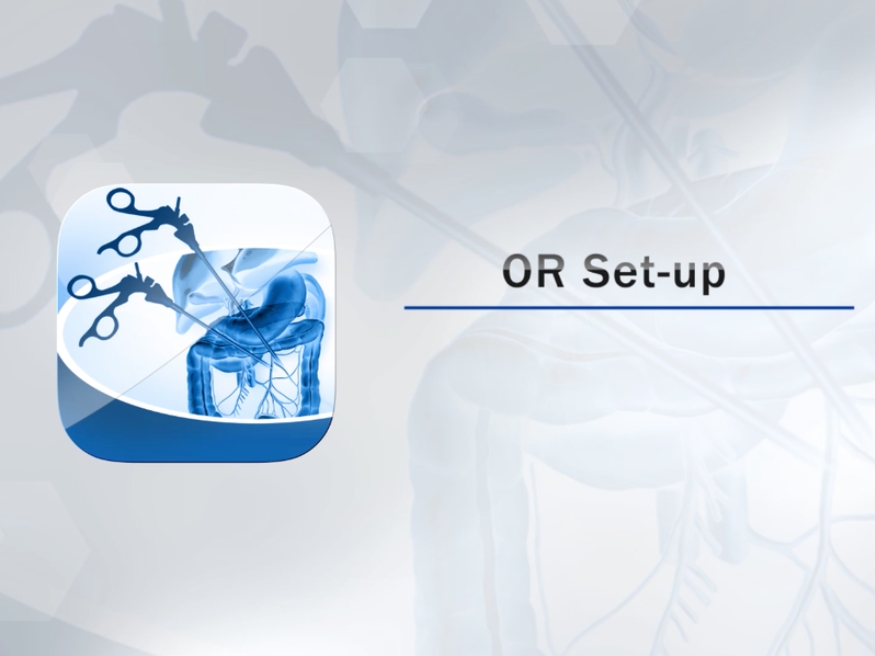OR Set-up and patient installation
Mathieu D’Hondt
Mohammed Abu Hilal
When performing a TaTME-procedure, it’s crucial to be well organized and work as a team. There is an ideal set-up for the abdominal part and for the transanal part of the operation after which the operation can be performed efficiently and precisely for optimal results.
Sequential steps:
When the operation is done by a single team, all steps must be performed sequentially. The surgeon works while an assisting surgeon or resident operates the camera. One scrub nurse and one circulating nurse complete the team.
Main steps of the sequential procedure are:
- Splenic flexure mobilization
- Laparoscopic mesorectal mobilization until seminal vesicles or rectovaginal septum is reached
- TAMIS-procedure until connected with transabdominal dissection
- Transanal or transabdominal extraction
- Preparing rectal cuff and proximal colon for reanastomosis
- Reanastomosis
- Diverting ileostomy if preferred
Synchronized steps:
When the operation is done by two teams, all steps can be performed synchronized. Each team has one surgeon and one assisting surgeon or resident. Each team has a scrub nurse and there is one circulating nurse for both teams.
A few technical aspects are important when using a two-team set-up compared to the procedure performed by one team:
- The legs are raised to a level that allows both teams to work
- The patient is tilted slightly left side up to aid abdominal
dissection – which can disorient the surgeon performing the transanal part of the procedure. It can be helpful to add a mark at the 6 o’clock position before tilting the patient, to act as a compass during the rest of the dissection.
- Although in most patients pressure of the pneumorectum can be equalized to the pneumoperitoneum (12 mmHg), it sometimes helps to have a slightly higher pressure for the transanal team. During the transrectal dissection, the pneumorectum can be gradually increased until the abdomen is reached.
- In the initial steps, insufflation of the bowel from below can bother the upper/transabdominal team. Desufflation through a rectal canula can be performed before tying the distal pursestring.
The abdominal team begins with splenic flexure mobilization
The second team starts only after full mobilization of the splenic flexure..
Synchronized steps from then on:
- Laparoscopic mesorectal mobilization (abdominal team) and TAMIS-procedure (perineal team) until connection
- Transanal or transabdominal extraction
- Preparation of rectal cuff for reanastomosis
- Reanastomosis
- Diverting ileostomy by abdominal team if preferred
When the procedure is performed in a synchronized fashion, much time is saved because steps are overlapping. During the dissection, clear communication and mutual traction/countertraction can aide both teams in their respective dissections.
Encountered difficulties can be tackled from both sides. It’s also an advantage to see illumination from the other team, helping with dissection and understanding of remaining tissue layers.
At the end of the procedure, both teams are less exhausted compared to one team that has to do it all in a sequential set-up.

